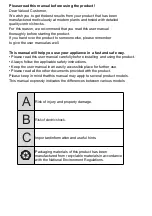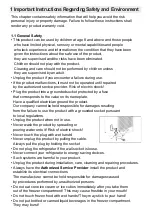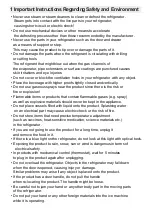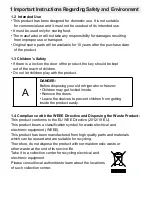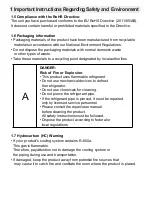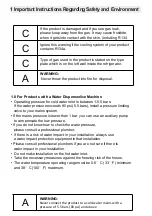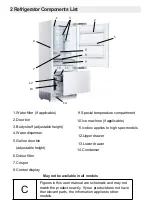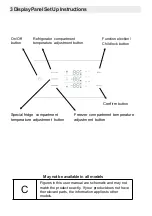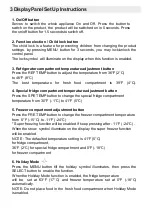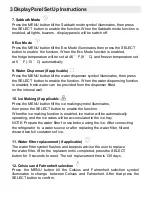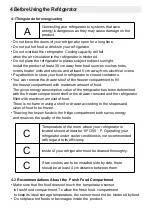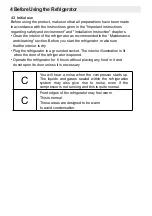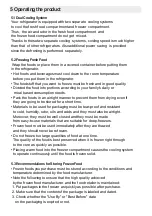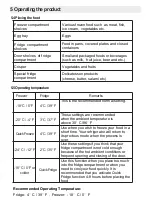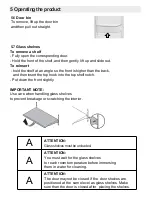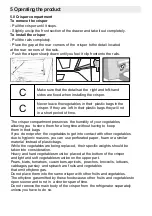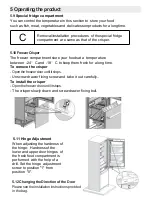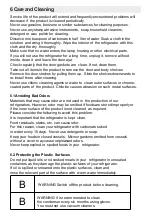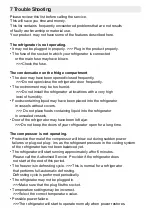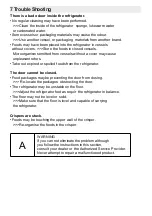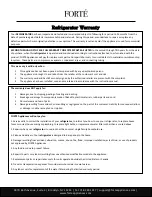
4 Before Using the Refrigerator
4.1 Thingsto do for energy saving
•
Do not leave the doors of your refrigerator open for a long time.
• Do not put hot food or drinks in your refrigerator.
• Do not overload the refrigerator. Cooling capacity will fall
when the air circulation in the refrigerator is hindered.
• Do not place the refrigerator in places subject to direct sunlight.
Install the product at least 30 cm away from heat sources such as hobs,
ovens, heater units and stoves and at least 5 cm away from electrical ovens.
• Pay attention to store your food in refrigerator in closed containers.
• You can remove the drawer shelf of the freezer compartment to fill
the freezer compartment with maximum amount of food.
The given energy consumption value of the refrigerator has been determined
with the freezer compartment shelf or the drawer removed and the refrigerator
filled with maximum amount of food.
There is no harm in using a shelf or drawer according to the shapes and
sizes of food to be frozen.
• Thawing the frozen foods in the fridge compartment both saves energy
and reserves the quality of the foods
C
Temperature of the room where your refrigerator is
located should at least be 10ºC/50
°
F. Operating your
refrigerator under cooler conditions is not recommended
with regard to its efficiency
C
inside of your refrigerator must be cleaned thoroughly.
C
If two coolers are to be installed side by side, there
should be at least 4 cm distance between them
4.2
Recommendations About the Fresh Food Compartment
• Make sure that the food does not touch the temperature sensor
in fresh food compartment. To allow the fresh food compartment
to keep its ideal storage temperature, the sensor must not be hindered by food.
• Do not place hot foods or beverages inside the product.
A
Connecting your refrigerator to systems that save
energy is dangerous as they may cause damage on the
product.


